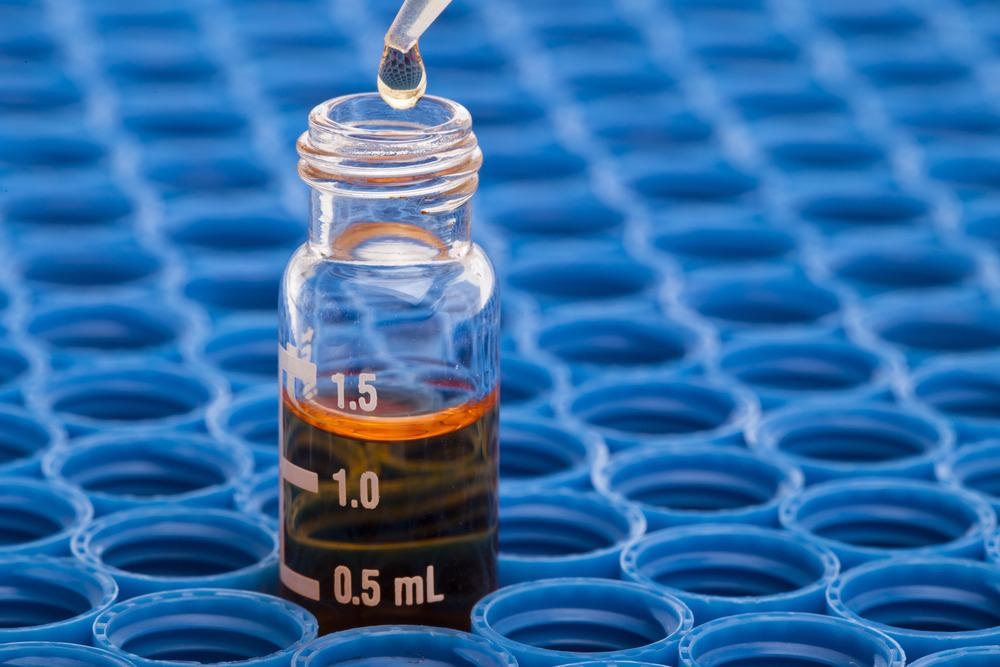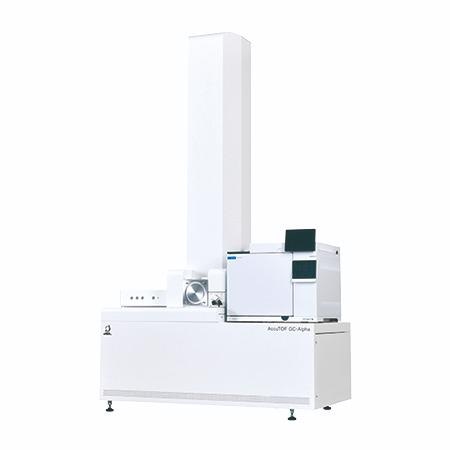 Interview conducted by Olivia FrostMay 26 2022
Interview conducted by Olivia FrostMay 26 2022In this interview, John Dane, the MS Product Manager at JEOL USA, Inc., talks to AZoM about mass spectrometry, and in particular, the role gas chromatograph-mass spectrometer plays in the petroleum industry.
To begin, can you give us a brief overview of what mass spectrometry is and the role gas chromatograph-mass spectrometers (GC-MS) play??
Mass spectrometry is a powerful tool for analyzing the chemicals present in solid, liquid, or gas samples. In its simplest form, a mass spectrometer (MS) consists of 3 major components: ion source, analyzer, and detector.
For MS analysis, the chemicals are first ionized in the ion source to create positive or negative charged molecules and/or fragments from these molecules. Afterward, the ions are directed into the MS analyzer to measure the mass-to-charge ratio (m/z) of each ion which is then detected by the detection system. Using this information, the observed m/z patterns can be related back to a particular analyte through database searches, high resolution accurate m/z measurements, fragment analysis, or a combination of these in order to determine the most likely identity for each measured compound.

Image Credit: ShutterStock/Matveev Aleksandr
Also worth noting, the ionization method is typically tied to the type of chemical species that will be targeted for the analysis. In general, small molecule analysis is typically done by using ionization techniques like electron ionization (EI) and chemical ionization (CI) while large molecule analysis (i.e. peptides, proteins, polymers, etc.) are ionized by using techniques like electrospray ionization (ESI) and Matrix Assisted Laser Desorption Ionization (MALDI). Additionally, for small molecules, the ions typically have a single charge so the mass of the ion is directly related to the measured m/z where z = 1. Conversely, for larger molecules, it is not uncommon to see multiple charged ions so it is necessary to multiply the m/z observed by the MS with the number of charges in order to calculate the actual mass of the molecule or fragment.
MS systems are commonly used as detectors for chromatographic techniques like gas chromatography (GC) and liquid chromatography (LC). These are considered hyphenated techniques. For GC-MS, the GC output is directly connected to the MS ion source in order to separate the chemicals present in the sample prior to them being ionized and measured by the MS. Doing this allows the analyst to evaluate each analyte’s MS data separately from the other chemicals in the sample. The key here is that GC involves separating compounds that can be vaporized by heat into the gas phase. With this in mind, GC-MS typically focuses on small molecule analysis (m/z ≤ 1000) as it is not possible to put larger molecules like peptides and proteins into the gas phase for GC separation. These larger molecules are better analyzed by using techniques like LC-MS.

Image Credit: ShutterStock/Nikita G. Bernadsky
Also of note, the most common ionization technique used for GC-MS is EI which is a hard ionization method that causes chemical compounds to break apart in a particular pattern that can then be compared and scored against EI database mass spectra for identification. Additionally, GC-MS can be used with other, softer ionization techniques like chemical ionization (CI), photoionization (PI), and field ionization (FI) for additional information about the intact molecule.
Overall, GC-MS is a common analytical chemistry technique that is widely used for a variety of applications (forensics, petroleum, environmental, etc.) and can be found in academic, government, and industrial labs worldwide.
What is the AccuTOF GC-Alpha mass spectrometer?
The AccuTOF GC-Alpha is our 6th generation GC-MS system to use a high-resolution time-of-flight MS. More specifically, the GC-Alpha’s high-resolution capability allows users to evaluate chemical masses beyond the decimal place.
Why is this important? As a very simple example, both carbon monoxide (CO) and nitrogen gas (N2) have a nominal (integer) mass of 28. If you measure these chemicals in a low-resolution MS system, they would be indistinguishable from each other and would simply be reported as a single peak appearing at m/z 28. However, with a high-resolution MS, because both species have different elements present in them, they would appear as 2 separate peaks with CO showing a peak at m/z 27.995 and N2 showing a peak at m/z 28.006. As this example highlights, the GC-Alpha allows users to determine the elemental compositions of each measured m/z.

Image Credit: JEOL USA, Inc.
Along with high-resolution capabilities, the GC-Alpha also offers a wide variety of ionization techniques that include EI, CI, PI, and FI. As mentioned earlier, EI is a hard ionization technique that causes chemical species to fragment into particular patterns that allow the user to compare the measured data to databases for identification. Unfortunately, not all chemicals are registered in the databases so it can be necessary to have other options available to help narrow down possible candidates.
As a result, it can be helpful to have other instrumental capabilities available to help with determining their identity. As for CI, PI, and FI, they are all soft ionization techniques that are designed to keep the chemical species intact during ionization so that the parent ion can be clearly measured in the mass spectrum. Consequently, combining one of these soft ionization techniques with high-resolution MS allows the analyst to determine the elemental compositions of the analytes present in the sample.
Can you tell us a bit about the two key technologies and the benefits they provide?
The two new key technologies introduced with the GC-Alpha are newly designed high-performance hardware and a new generation of data analysis software.
The new hardware consists of a new and improved ion optical system that provides both high ion transmission for better sensitivity and improved high resolution for better peak separation of ions that only differ after the decimal place. Specifically, the system’s resolving power was increased from 10,000 for the previous generation system to 30,000 for the GC-Alpha.
Additionally, the mass accuracy for the system was also improved from less than 3ppm to less than 1ppm for more accurately reporting the measured m/z for each analyte. These hardware improvements are an exciting development that allows us to be a uniquely strong presence in the high-resolution GC-MS market.

Image Credit: ShutterStock/everything possible
As for the other key technology, msFineAnalysis is a new software package that was specifically designed to capitalize on the unique capabilities of the GC-Alpha. In it’s simplest form, the software uses a new workflow that involves automatically integrating the data obtained by hard ionization (EI) and the data obtained by soft ionization (FI, PI, CI) in order to identify the analytes present in a sample. The output is a color-coded report that is easily reviewed by the user.
This new automated workflow is quite significant because, as I briefly touched on, GC-MS data analysis typically only relies on comparing EI mass spectra to database searches. Unfortunately, it is not uncommon to measure unknown chemicals in samples that do not have a good database match. As a result, the analyst is not able to confidently identify them through database search alone. This is where the combination of the GC-Alpha’s high resolution and soft ionization capabilities along with the msFineAnalysis software steps in to help with automatically analyzing the data to identify these unknown compounds.
Why is the GC-Alpha ideal for petroleum applications?
The GC-Alpha is a powerful tool for looking at petroleum samples in that it provides a unique set of capabilities not available with other GC-MS systems. For most petroleum hydrocarbons, if you use EI, these compounds will fall apart into common fragment ions and produce little to no parent ions (termed molecular ions) to help with identification. Because of this, a soft ionization technique is a requirement for helping to identify these compounds.

Image Credit: ShutterStock/manine99
As it turns out, CI (the most common soft ionization technique) is not an ideal candidate for doing this as it requires reactive sites for efficient ionization and often results in fragmentation for these hydrocarbons. On the other hand, the GC-Alpha can be uniquely equipped with Field Ionization (FI) to ionize hydrocarbons in order to produce molecular ions which can then be used with its high-resolution capabilities to identify each compound.
FI is considered a gold standard for ionizing hydrocarbons for MS and is widely used in the petroleum industry. Lesser used in this field but also useful for petroleum analysis is photoionization (PI). It is a soft ionization technique that is less energetic than CI (so there’s less fragmentation) but more energetic than FI. PI is particularly useful for ionizing aromatic hydrocarbons so it is a more focused ionization technique towards these types of compounds.
Also worth noting is the fact that petroleum samples are typically incredibly complex with hundreds and hundreds of compounds present. As a result, their analysis requires a lot of chromatographic separation prior to their introduction into the MS for identification. The most common scenario is to address this situation by using GCxGC for the separation in which the sample is separated by two columns with different column phases (typical one nonpolar column and one polar column) in series to achieve reasonable separation of all the compounds from each other. As it turns out, GCxGC requires a fast detection system that can at a minimum measure data at 25 spectra/sec. The GC-Alpha is better than this and can be run at up to 50 spectra/sec.

Image Credit: ShutterStock/Avigator Fortuner
The GC-Alpha is basically the total package for petroleum analysis in that it brings together high-resolution MS, high-speed data acquisition, field ionization, and GCxGC in order to look at incredibly complex samples to identify unknowns. We have a number of petroleum applications (base oils, diesel fuel, kerosene, etc.) on our website that highlights these capabilities.
In terms of petroleum applications, why was it important that the GC-Alpha utilized two combination ion sources (EI and soft ionization)?
Our combination ion sources, which include an EI/FI version and EI/PI version, are useful in that they do not require the user to break the vacuum in order to change between hard and soft ionization. This is a very useful feature in that changing ionization methods can often involve exchanging ion source hardware which typically requires pulling the GC column back prior to extracting the old source and then putting in the new source and waiting for the source region to reach vacuum again. Unfortunately, this can take time to do, and pulling back the column can result in breaking the column which in turn affects retention times for separated molecules in which a mismatch in retention times occurs between the different ionization measurements.
The GC-Alpha overcomes these problems with combination ion sources. For the EI/FI source, all that is required to switch between ionization methods is a quick exchange of probes through a vacuum interlock. This typically takes less than a minute. As for the EI/PI source, all that is required is to switch from EI to PI is turning off the EI filament and turning on the PI lamp.

Image Credit: ShutterStock/Corona Borealis Studio
For petroleum applications, both of these sources are very useful in that they allow the user to switch between ionization methods with no downtime. In particular, the EI/FI combination source is incredibly useful for the analysis of petroleum compounds such as saturated hydrocarbons, especially when using FI to determine molecular ions. These kinds of compounds are notoriously difficult when it comes to producing molecular ions by any other soft ionization method. For the EI/PI, the PI capability is extremely sensitive for measuring aromatic compounds so having this capability can really provide insight into the presence of these compounds in petroleum samples.
How does the GC-Alpha differ from other GC-MS’s on the market?
With a high-resolution capability of 30,000, the GC-Alpha is very competitive with the current state-of-the-art for high-resolution GC-MS instruments. Additionally, this system offers the widest variety of ionization methods with EI, CI, PI, and FI and high-speed data acquisition. Also worth noting, the system also offers direct insertion probe (DIP), direct exposure probe (DEP), and field desorption (FD) methods for direct analysis of samples that are not capable of being vaporized for GC separation. Basically, these options allow you another method of analysis when doing GC-MS analysis is not possible.
All of these capabilities really separate the GC-Alpha from other systems available in the market, which is extremely exciting for us. We are really looking forward to seeing the GC-Alpha continue to grow in the petroleum market as well as seeing this system continue to expand into other markets as well.
About JEOL USA, Inc.
Since 1949, the JEOL legacy has been one of outstanding innovations in developing instruments used to advance scientific research and technology. JEOL has 70 years of expertise in the field of electron microscopy, more than 60 years in mass spectrometry and NMR spectroscopy, and more than 50 years of e-beam lithography leadership.
About John Dane 
John graduated from Colorado School of Mines in 2006 with a doctorate in applied chemistry with a focus on mass spectrometry. Afterwards, he a took a postdoctoral position at the National Renewable Energy Laboratory to study biodiesel combustion.
John joined JEOL USA, Inc. in 2008 as an MS applications chemist supporting all MS product lines, which include GC-MS, GCxGC-MS, MALDI-MS, and DART-MS. John was promoted to MS Product Manager in October 2020.
He currently lives in the Boston area and enjoys getting outdoors whenever possible.
Disclaimer: The views expressed here are those of the interviewee and do not necessarily represent the views of AZoM.com Limited (T/A) AZoNetwork, the owner and operator of this website. This disclaimer forms part of the Terms and Conditions of use of this website.
Disclaimer: The views expressed here are those of the interviewee and do not necessarily represent the views of AZoM.com Limited (T/A) AZoNetwork, the owner and operator of this website. This disclaimer forms part of the Terms and Conditions of use of this website.